- 02/08/2022
What is linseed oil used for?
What is linseed oil used for?


In simple terms, linseed oil can be used to change how paint behaves. Depending on the type of linseed oil used, it will either speed up or slow down drying time, changing the pigment and reducing the visibility of brush strokes.
There are many types of linseed oil used for a variety of different purposes, such as treating wood and in the production of linoleum flooring. The type used in painting is called refined linseed oil.
What is linseed oil?


Linseed oil is made using flax seeds, which have been dried and pressed. It’s a material that has been used with oil paint for hundreds of years – as far back as the 12th century.
Flax seeds can be pressed using heat or without. Pressing flax seeds without using heat reduced impurities, and is more similar to the kind of linseed oil used by the old masters.
How to use linseed oil
Using refined linseed oil is simple for beginners and experienced painters alike. Simply mix with oil paint on a palette and watch the consistency and pigment change.
Try a few different ratios of oil to paint – then leave it dry – to see what intensity you’re looking for.
Top tip: As an alternative to mixing on a palette, try dipping your brush into the medium, then into your paint, working directly onto the canvas.
Slow over fast
A good rule of thumb when using linseed oil is to apply paint that has the highest ratio of refined linseed oil to paint first.
Wait until it’s fully dry before adding another, slower drying layer on top. This allows you to build up your image gradually without too much oil on the surface.
Use less for top layers
As well as layering according to drying time, it’s best to avoid using too much refined linseed oil on your thicker, final layers. Too much oil within thicker layers may cause cracking as it dries.
Test first
Be careful about the amount of linseed oil you mix into lighter colours – especially white. Due to its light brown colour, it can cause slight yellowing if the ratio of paint to oil isn’t quite right.
To make sure you’re happy with the effect, try mixing a small amount into the colour you want to use as a test first.
Which paints can be used with linseed oil
Refined linseed oil is commonly used as a medium with oil paint. This a match made in heaven – you’ll be able to use every type of linseed oil with oil paint to create a huge variety of effects.
It’s not recommended to use refined linseed oil with water-based paints, like acrylics or watercolours. Oil and water don’t mix, so it isn’t possible to blend them correctly.
Types of linseed oil
There are many types of refined linseed oil available to painters. Each has its own quirks and qualities – try to experiment with different kinds to see which suits your painting style.
Refined linseed oil
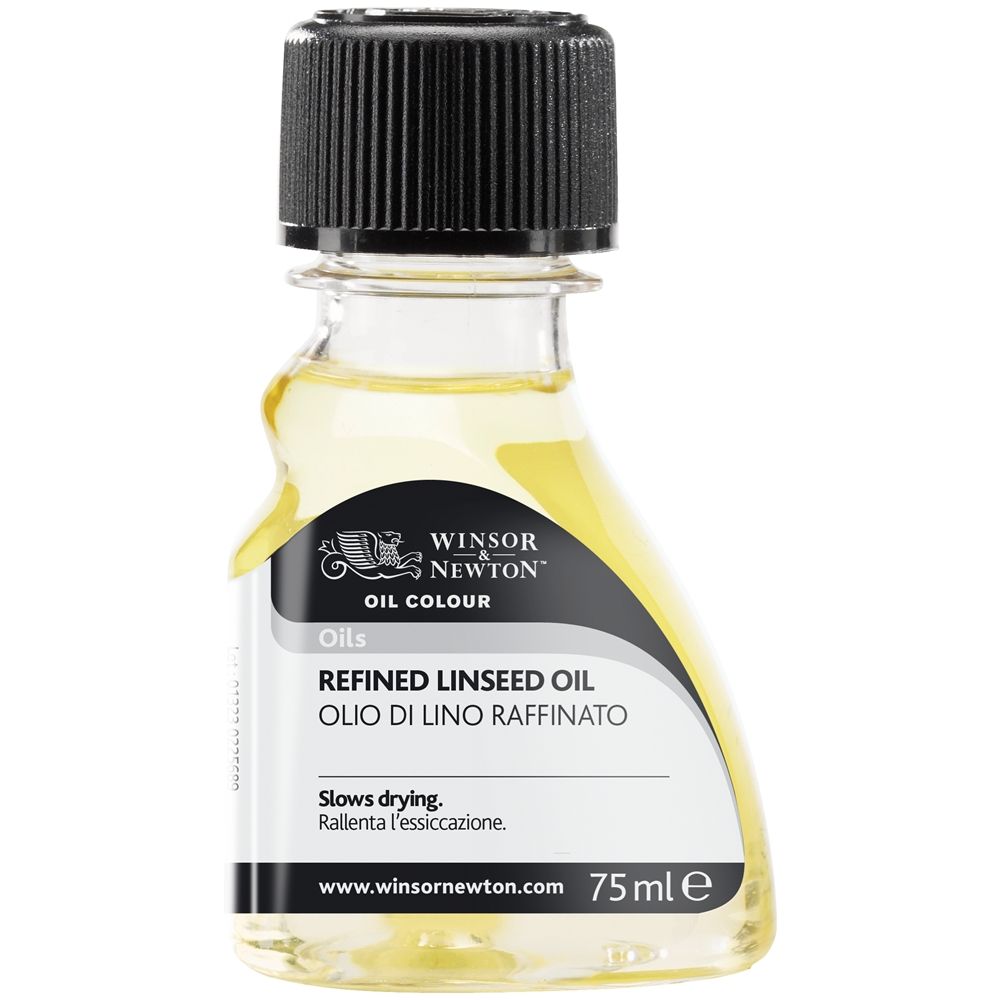

Commonly used and easy to mix, refined linseed oil is the purest form available. Mixing refined linseed oil with oil paint will slow the drying time, causing the pigment to become more transparent and improving flow.
When dry, oil paint used with refined linseed oil will have a glossy finish. Refined linseed oil has a paler appearance than many other types on the list and will cause very little discolouration within your artwork as time passes.
Drying linseed oil
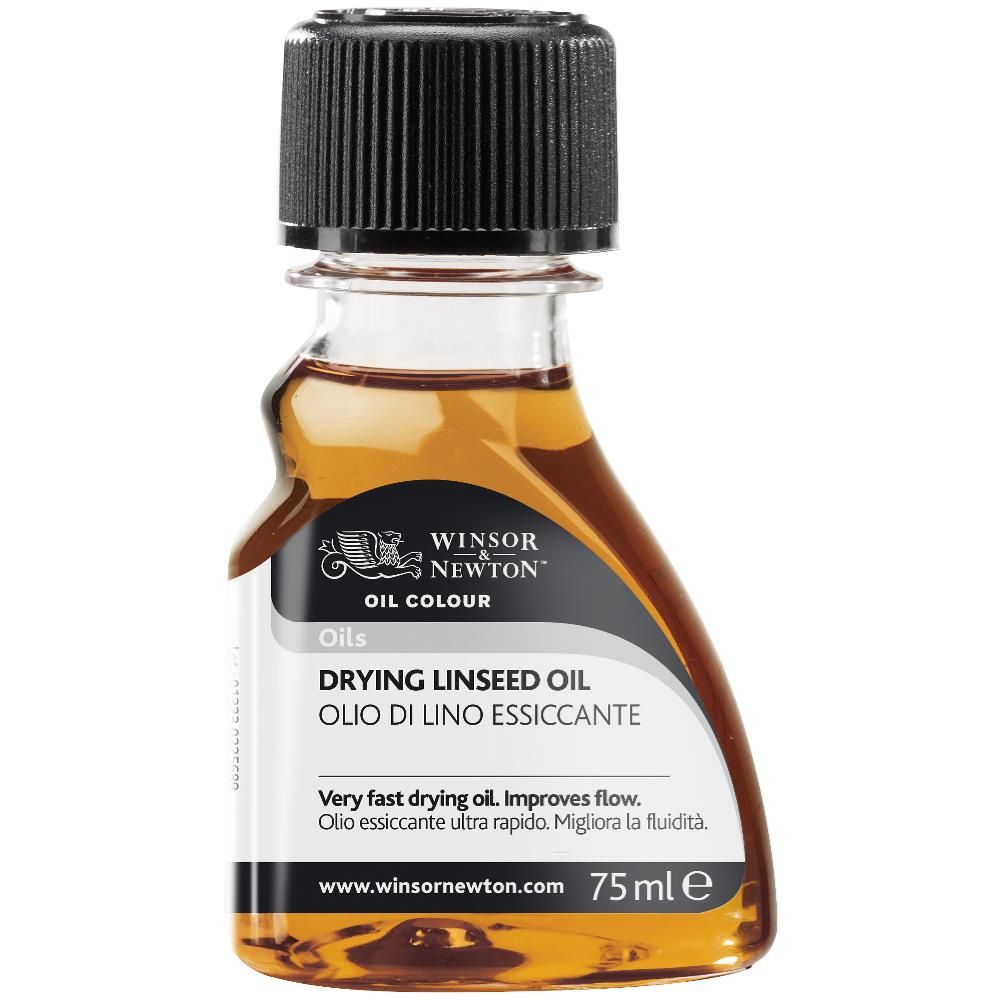

The fastest drying option available, this type of linseed oil will produce a glossy sheen within oil paint. Using drying linseed oil can make oil painting less time intensive, as you’ll be able to build up layers of colour more quickly.
Linseed stand oil
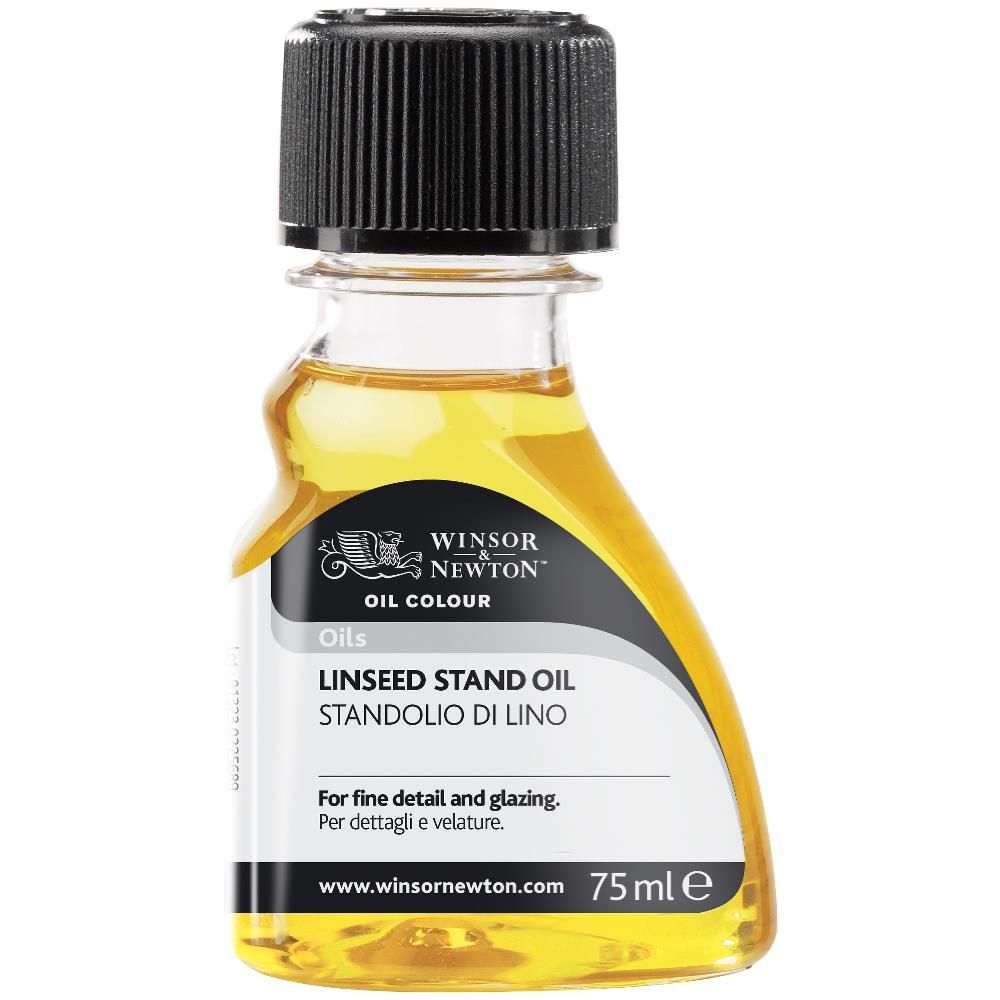

The opposite of drying linseed oil, stand oil will increase the drying time of your oil paint. This extra patience pays off, producing a thick, enamel effect once dry. Stand oil can be tricker to master than ordinary refined linseed oil, and may not be the best option for beginners.
Stand oil has a thick, treacle-like consistency. It can be diluted using a solvent like turpentine – be careful to only use solvents in a well-ventilated area.
Thickened linseed oil
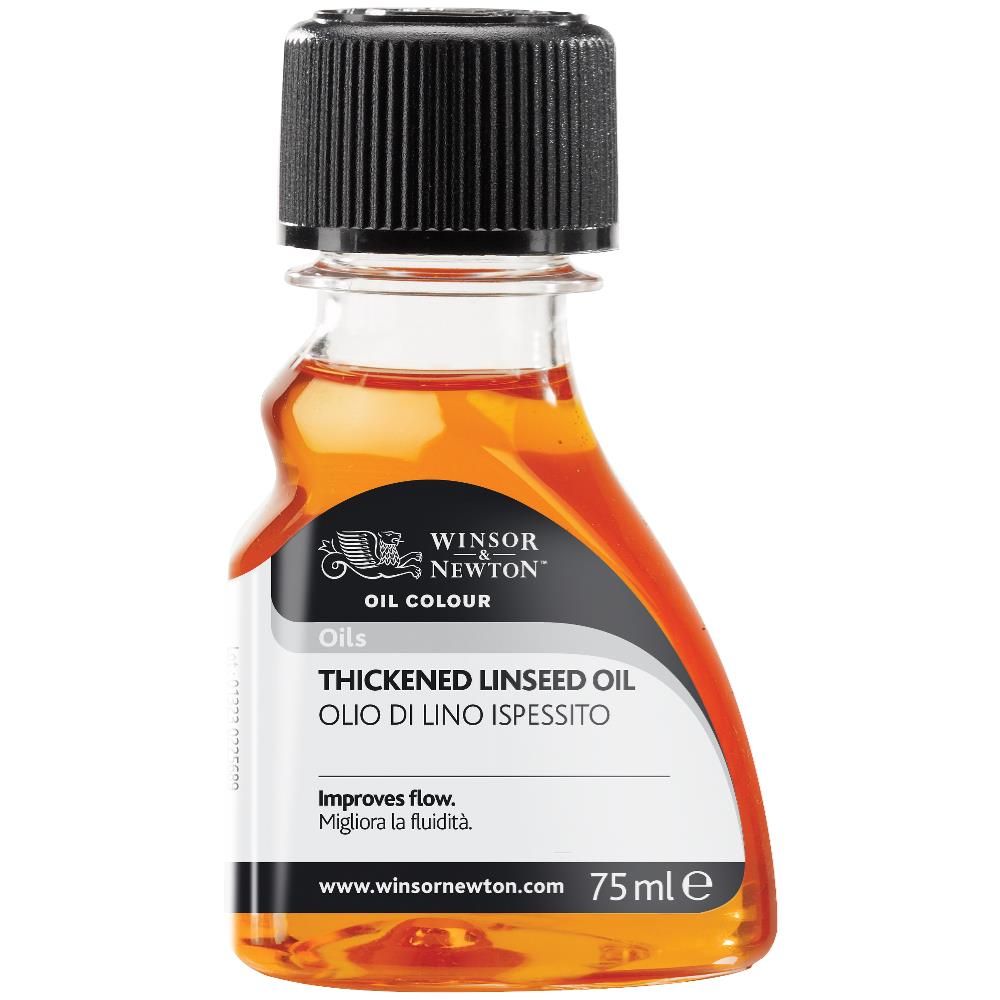

With a syrup-like consistency, thickened linseed oil has a similar appearance to stand oil. Instead of slowing the drying time, it will speed it up, giving your oil paint a stronger, darker pigment.
Cold-pressed linseed oil
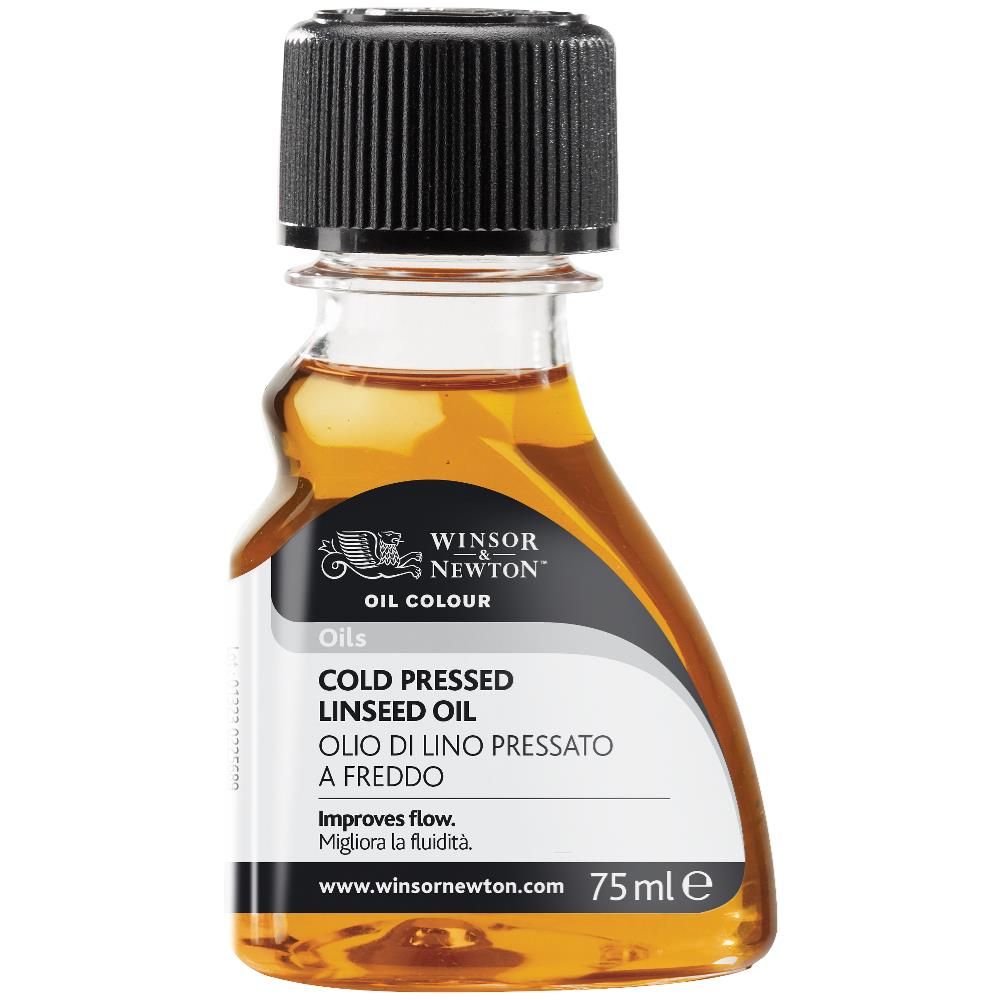

Cold-pressed linseed is excellent quality and will impact the transparency and gloss of your oil paints. Cold-pressed linseed oil will improve the gloss of your oil paint, reducing the consistency and appearance of brush strokes.
A benefit of using cold-pressed refined linseed oil over normal refined linseed oil is avoiding discolouration. Due to its impeccable purity, you’ll see significantly less yellowing or change to pigmentation, keeping your painting pristine for years to come.
Where to buy linseed oil
If you’re interested in trying linseed oil with your next artwork, we stock a full range of different types. Pick up a bottle of:
Refined linseed oil from Pebeo.
Stand oil from Winsor & Newton.
Drying oil from Winsor & Newton.
Cold-pressed linseed oil from Winsor & Newton.
 Same Day Dispatch Mon-Fri Before 2PM
Same Day Dispatch Mon-Fri Before 2PM

 Free UK Delivery on Orders Over £50
Free UK Delivery on Orders Over £50

